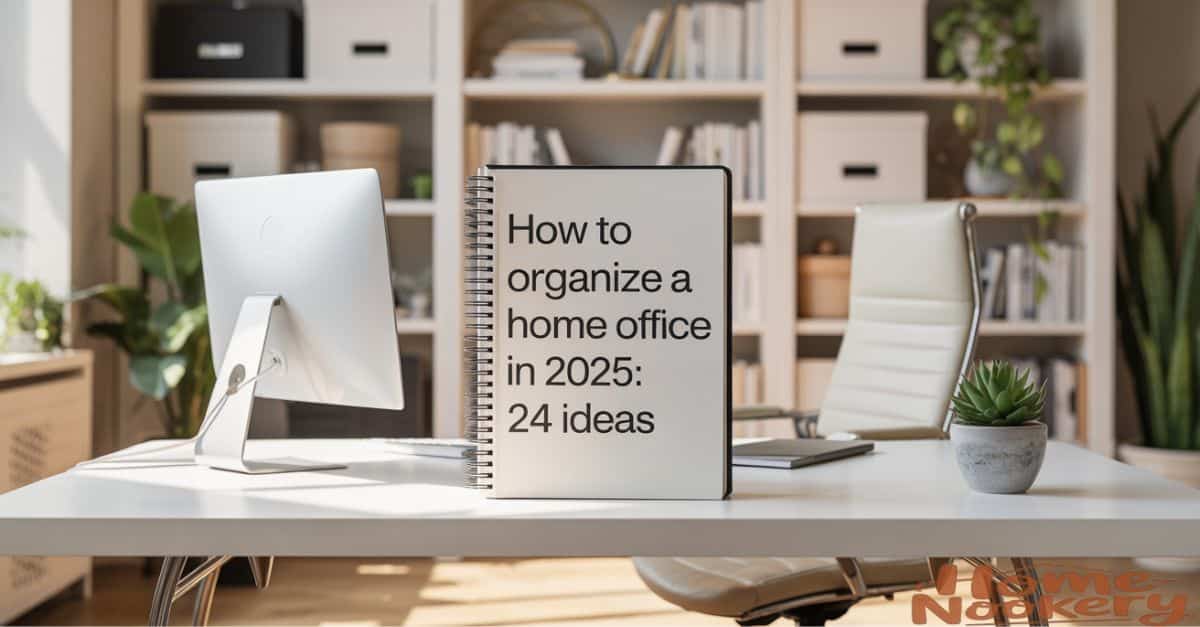In the post-pandemic era of 2025, our home offices have evolved from makeshift corners to sophisticated workspaces that balance productivity, comfort, and technology. Whether you’re working remotely full-time or need a dedicated space for personal projects, creating an organized home office is essential for success.
Let’s dive into 24 innovative ideas that’ll transform your work-from-home experience this year.
1. The Anti-Gravity Workspace

Vertical space ain’t just for walls anymore. In 2025, think three-dimensionally with floating shelves and magnetic organizational systems that seem to defy gravity. These solutions create visual intrigue while keeping essential items within arm’s reach without cluttering your desk.
Monitor arms that suspend your screens above the desk have become practically mandatory. They free up valuable desk real estate and allow you to adjust viewing angles on the fly. Your neck will thank you.
2. Biophilic Integration Zones

Plants aren’t just pretty face anymore—they’re essential coworkers. Create dedicated green zones with air-purifying varieties like the upgraded spider plants and peace lilies that are geneticly enhanced for better air filtration.
Studies show that strategic placement of plants can reduce stress by up to 37% and increase productivity by 15%. Plus, many modern varieties double as subtle air quality monitors, changing leaf patterns when air quality decreases. Clever little things.
3. Multisensory Focus Pods

The latest trend in home office design incorporates sensory elements that boost concentration. Think compact focus pods with adjustable lighting that shifts to match your circadian rhythm, paired with programmable scent diffusers that release focus-enhancing aromas.
These pods can be as simple as a corner with a smart lamp and essential oil diffuser, or as complex as a fully enclosed mini-room. The goal is creating a multisensory environment that signals to your brain “it’s time to work now, mate.”
4. The Invisible Tech Suite

Cable management has reached new heights in 2025. Wireless charging surfaces embedded directly into desks mean no more tangled cords or hunting for the right adapter. Power is just…there.
Combined with ultra-thin monitors and keyboard surfaces that appear only when needed, the modern office achieves a minimalist aesthetic without sacrificing functionality. When not in use, your office actually looks like a zen sanctuary. Magic!
5. Dynamic Storage Solutions
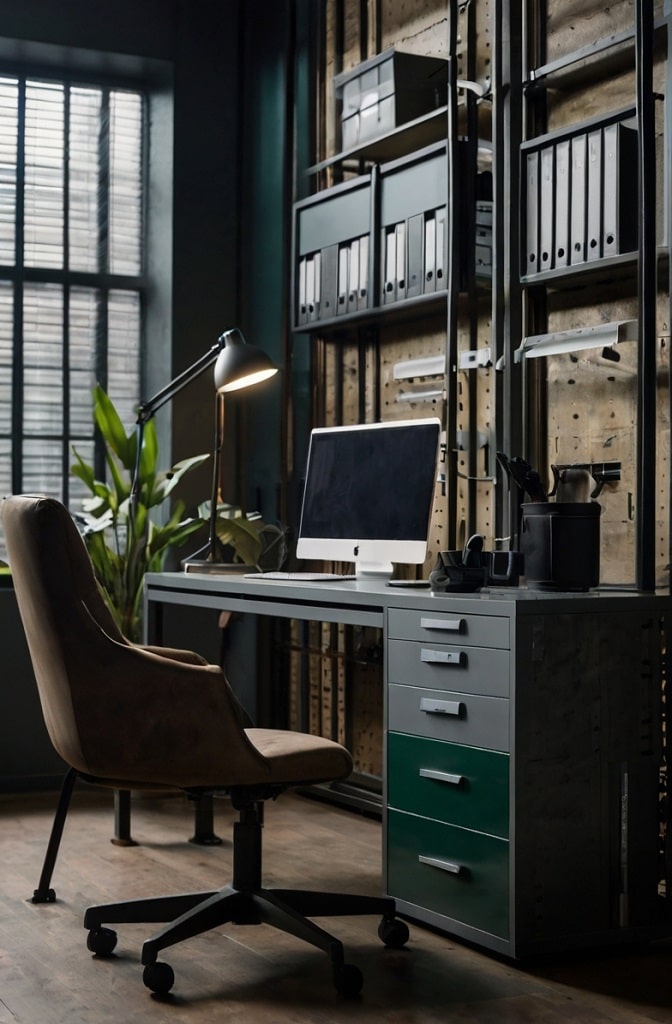
Static filing cabinets? So 2020. Today’s storage systems rotate, expand, and contract based on your needs. Modular units with AI-enhanced organization suggest the optimal configuration for your current projects.
Voice-activated drawer systems mean you can say “I need the Johnson proposal” and the correct drawer slides open automatically. It’s propably the closest most of us will get to feeling like Batman with his fancy cave computer.
6. Acoustically Optimized Zones
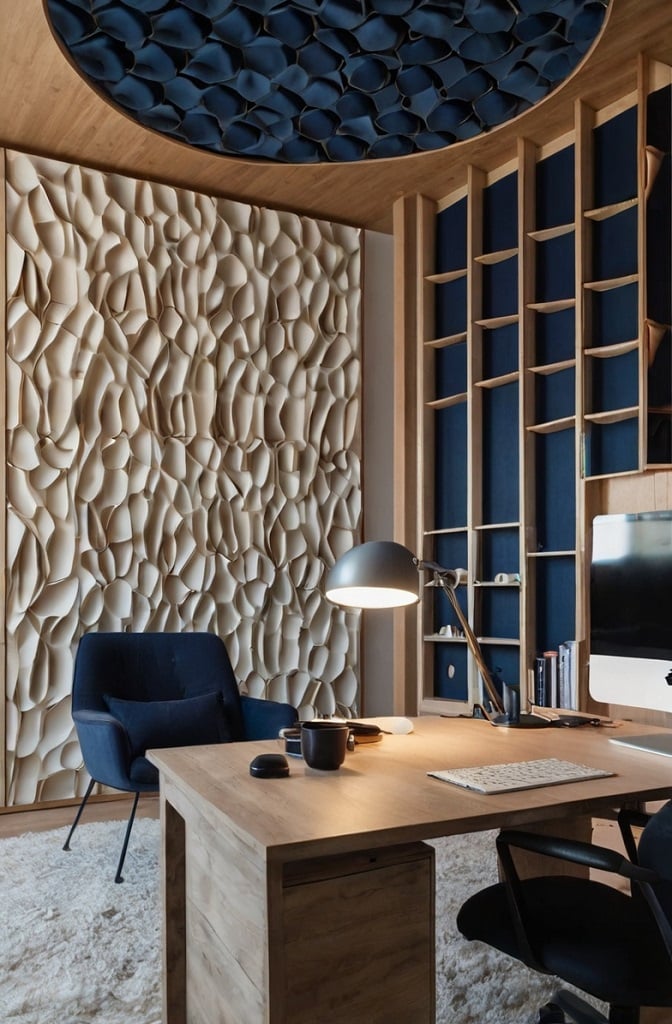
Background noise is the silent productivity killer. Modern home offices incorporate strategic sound dampening panels that don’t just reduce noise—they actively cancel it in targeted areas.
These panels have evolved from the ugly foam squares of yesteryear to become designer statement pieces. Many double as art installations or living walls, proving function and form can coexist beautifully. Your Zoom calls will never have that echo-y quality again.
7. The Transformable Desk Ecosystem
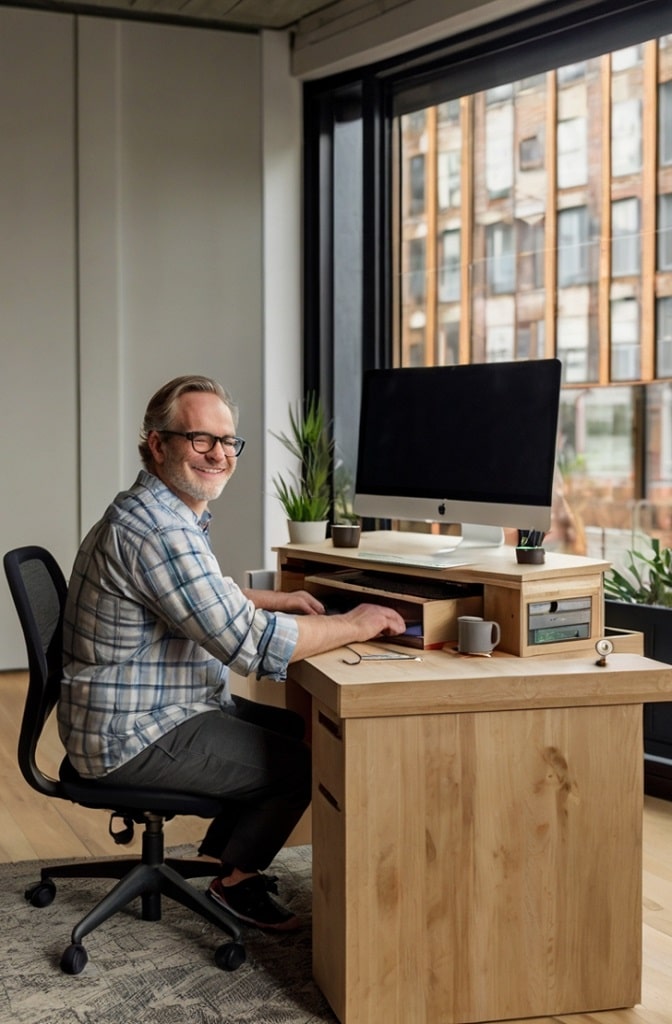
Fixed desks are a relic. Today’s workspaces transform from sitting to standing, from computer work to crafting, from solo focus to collaborative sessions with the touch of a button or voice command.
Memory settings allow your desk to learn your preferences throughout the day. It might automatically rise to standing height after you’ve been sitting for an hour, gently nudging you toward healthier work habits. Like having a personal trainer for your furniture.
8. Micro-Break Stations
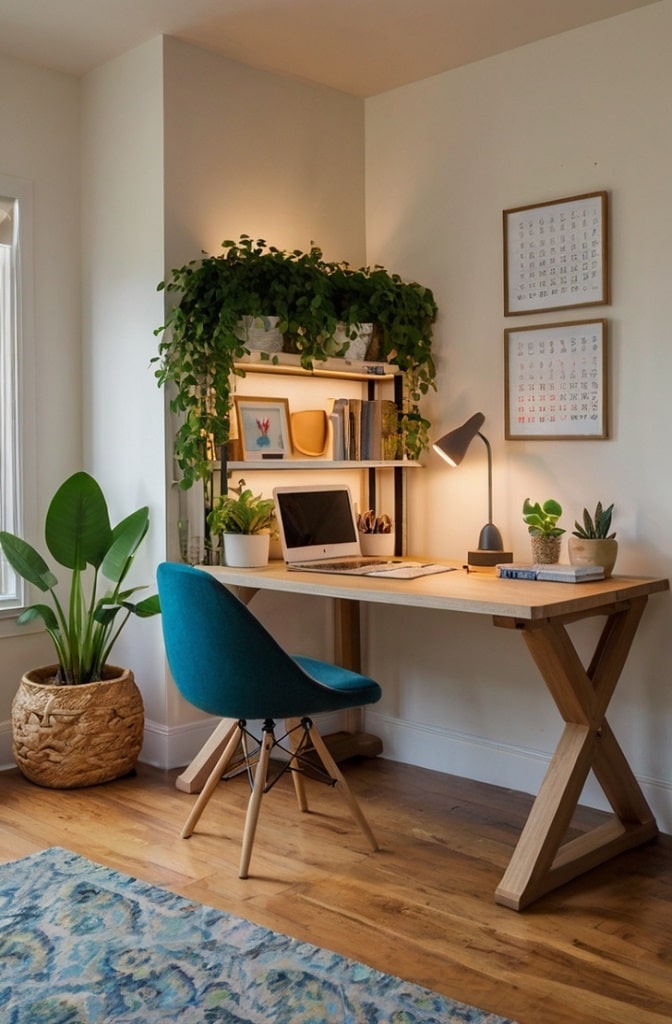
The 2025 office recognizes that productivity isn’t about constant work—it’s about strategic breaks. Dedicated micro-break stations offer quick mental refreshes without the temptation to wander off task completely.
These might include a 30-second meditation corner, a mini-putting green, or even simple fidget toys designed specifically to engage different parts of your brain. Small investments in these areas yeld big returns in focus and creativity.
9. Climate-Adaptive Environments
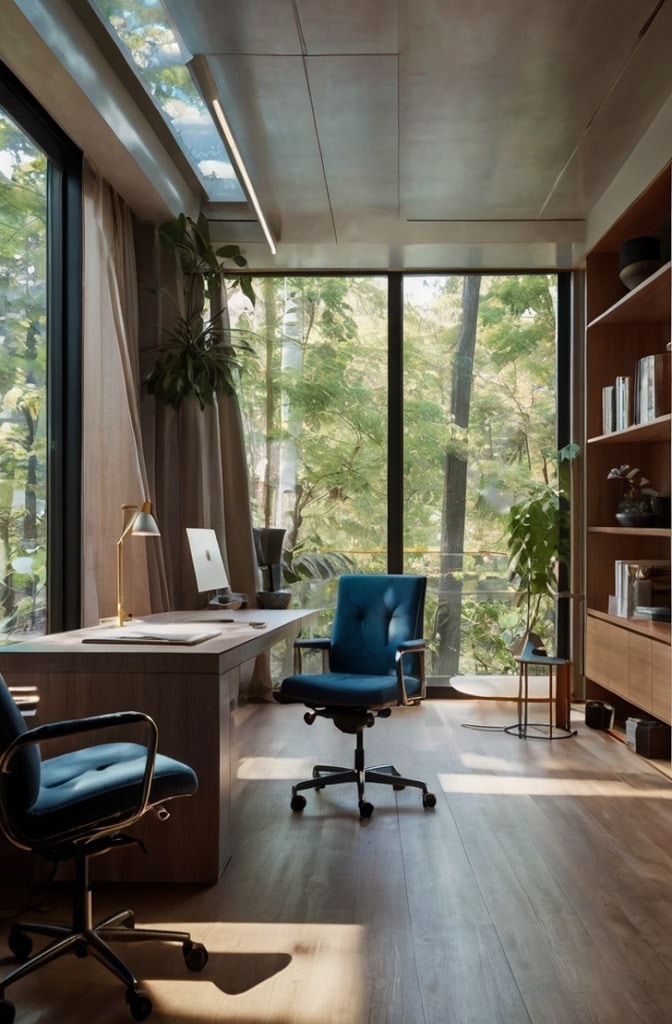
Personal climate control has become a cornerstone of home office design. Smart vents and targeted heating/cooling systems create a microclimate that maintains your ideal temperature regardless of what’s happening in the rest of the house.
These systems learn your preferences over time and adjust automatically based on outside weather, time of day, and even your calendar. Got an important presentation? Your office will cool slightly to keep you alert and focused without you even asking.
10. Analog Sanctuaries
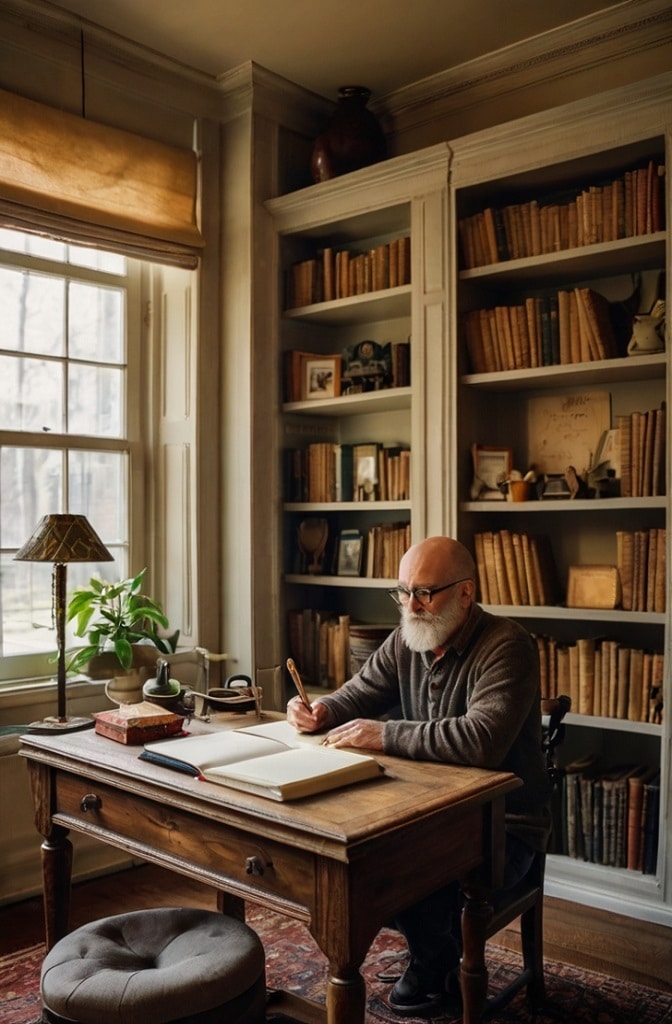
In reaction to our increasingly digital world, the analog sanctuary has emerged as a surprising trend. This is a deliberately tech-free zone within your office where paper, pens, and tangible tools rule.
Many professionals report breakthroughs when they step away from screens and work with physical materials. This space might include a drafting table, art supplies, or simply a beautiful notebook for unplugged thinking. Sometimes the old ways are still the best, innit?
11. Dynamic Lighting Systems
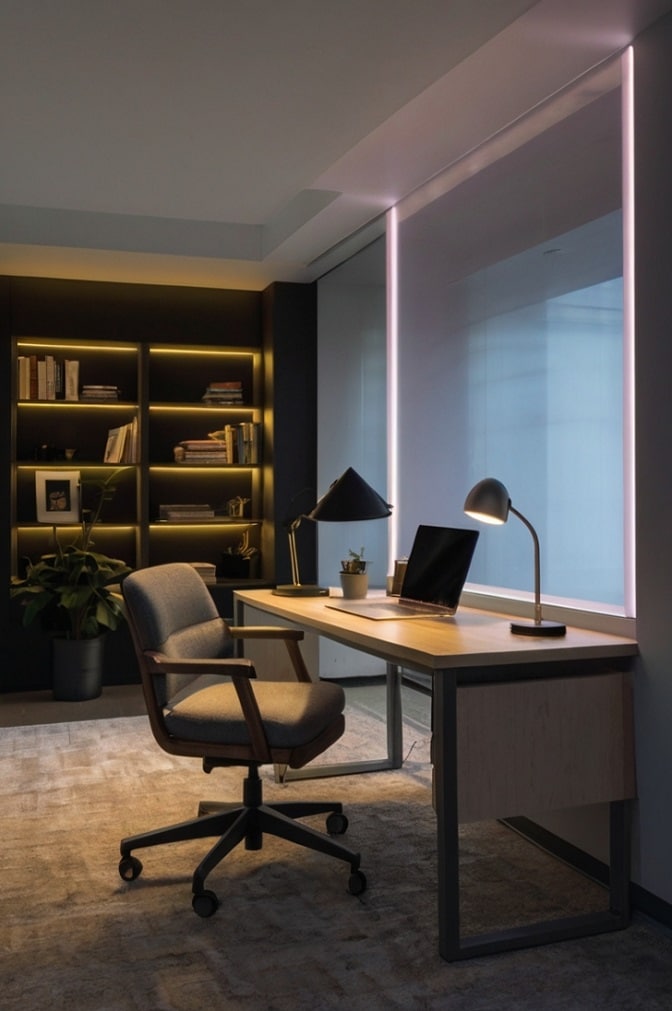
Static lighting is so last decade. Modern home offices feature programmable lighting that mimics natural daylight patterns, adjusts color temperature based on tasks, and even gently pulses to help maintain focus during long sessions.
The latest fixtures can sync with your calendar, automatically shifting to energizing modes before important meetings and calming tones as you approach the end of your workday. It’s like having the perfect lighting assistant.
12. Rapid Reconfiguration Rails
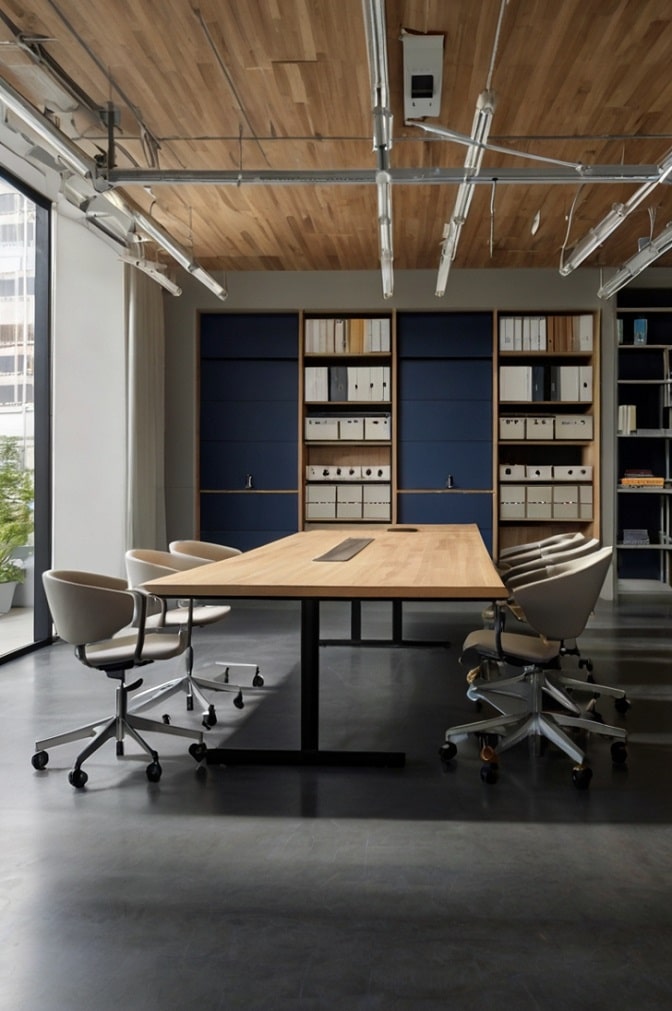
Fixed furniture arrangements limit creativity and adaptability. The 2025 solution: furniture mounted on ceiling or floor rails that allows rapid reconfiguration of your space depending on the day’s tasks.
With a simple gesture or voice command, your desk, storage, and seating can shift from a solo work configuration to a meeting setup, or transform into a presentation space. Your office becomes as fluid as your workday.
13. Conscious Contrast Zones
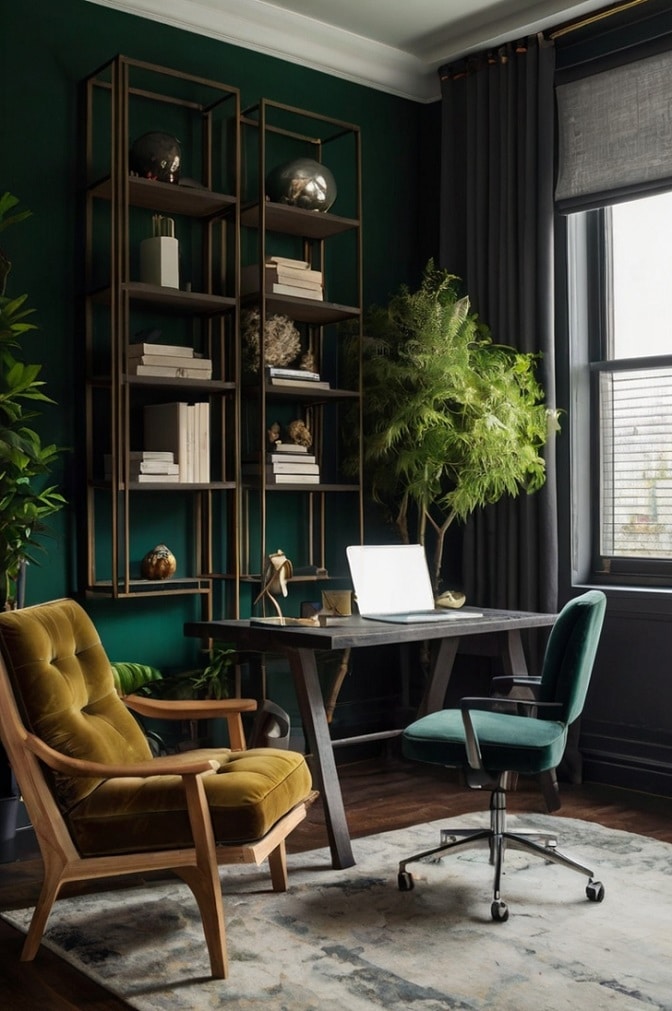
The most productive offices include areas with deliberately contrasting energies—creating visual and functional variety that prevents the mental fatigue of sameness.
This might mean pairing a highly structured, minimal desk area with a lush, organic relaxation corner. Or contrasting high-tech collaborative zones with low-tech, tactile thinking spaces. The visual disruption actualy helps your brain stay engaged.
14. The Holopresence Corner
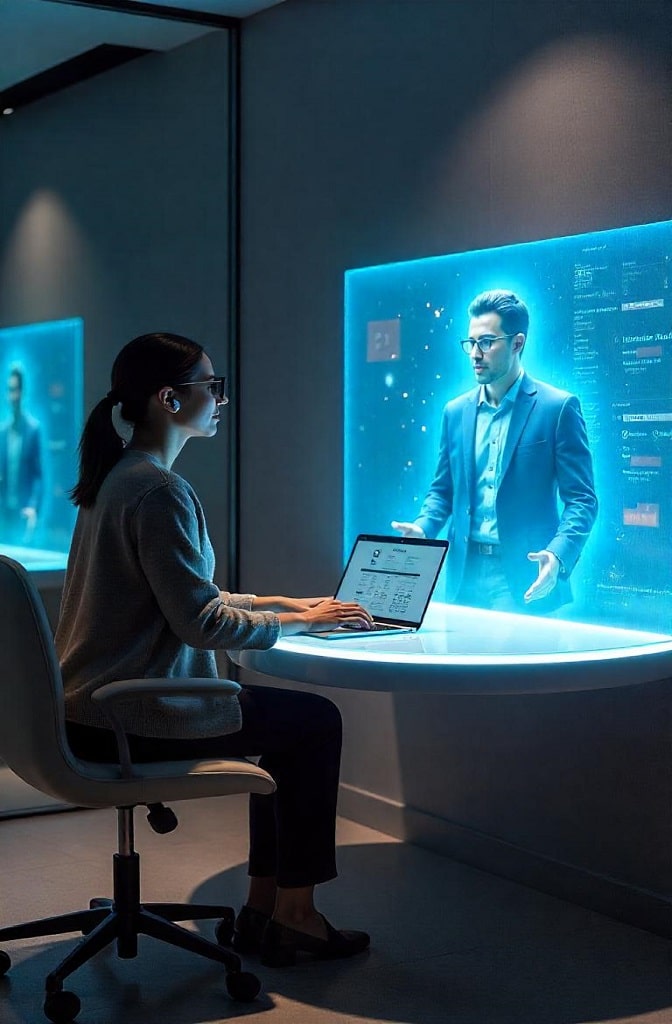
Virtual meetings have evolved beyond flat screens. Modern home offices include dedicated areas for holographic or augmented reality meetings, where 3D representations of colleagues appear to share your physical space.
These areas need specific lighting and background considerations, along with enough open floor space for natural movement. Even modest budgets can create effective holopresence zones with the right planning. It’s like Star Trek but with more budget spreadsheets.
15. Wellness Integration Points
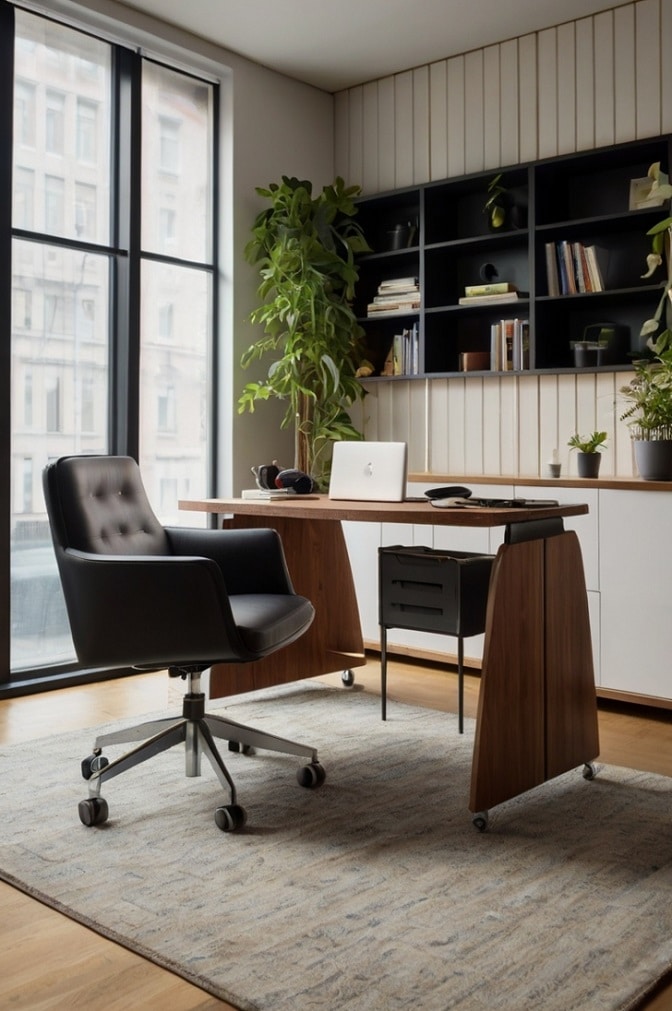
Health isn’t an afterthought in the 2025 office—it’s built into the infrastructure. From air purification systems to subtle reminders to move, stretch, or hydrate, wellness features are seamlessly woven throughout.
Smart water bottles that glow when you need hydration, chairs that gently vibrate when you’ve been still too long, and circadian-rhythm lighting all work together to maintain your physical wellbeing while you focus on work.
16. Nested Storage Hierarchies
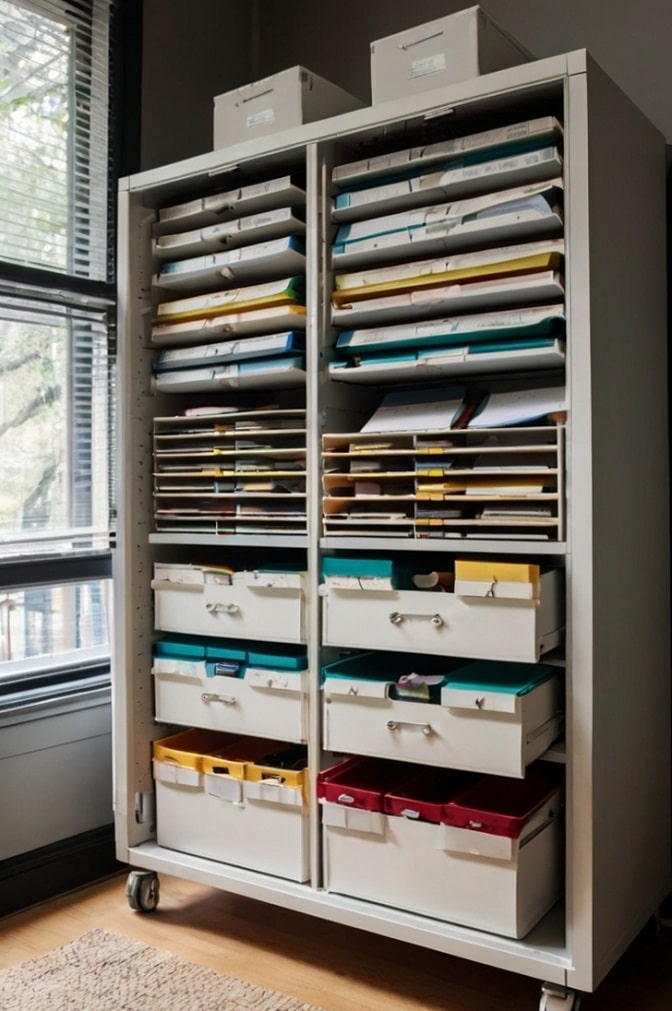
Random storage leads to chaos and lost time. The modern approach uses nested hierarchies—systems within systems—to maintain order even during busy periods.
This might look like color-coded file boxes within labeled drawers within designated cabinets, all following a consistent organizational logic. The key is creating intuitive pathways to find exactly what you need without conscious thought. No more thinking “where did I put that thing?”
17. The Transition Threshold
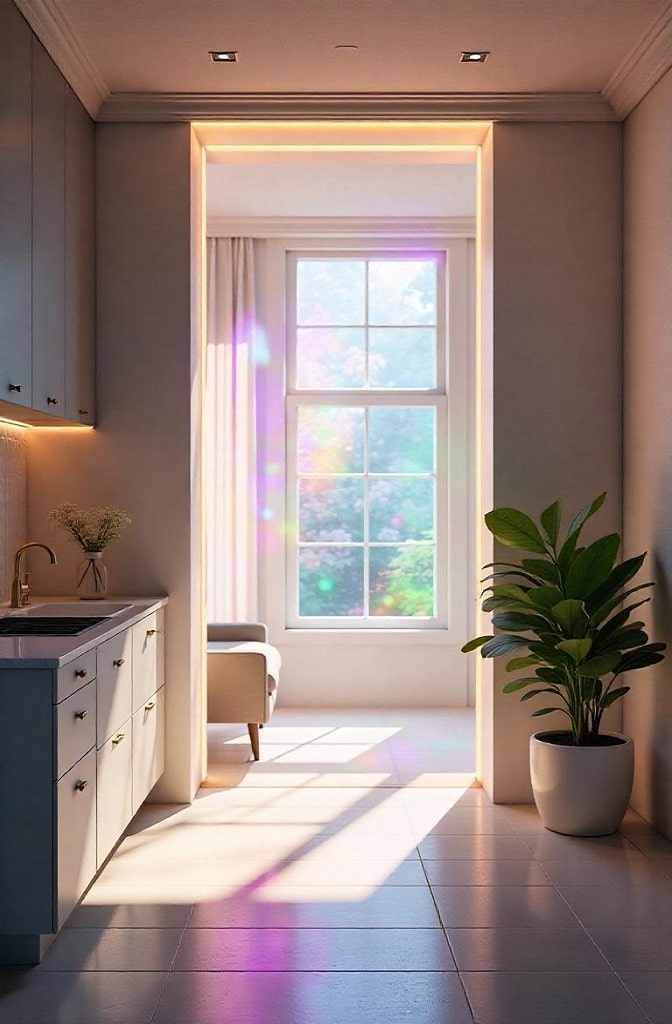
The line between “home” and “office” needs definition, especially in open floor plans. Creating a deliberate transition threshold helps your brain switch contexts even when the physical distance is minimal.
This could be as simple as a decorative screen or as elaborate as a small vestibule where you symbolically “enter” your workspace. Some professionals even use lighting cues or brief rituals to mark the transition between living and working modes.
18. Adaptive Privacy Screening
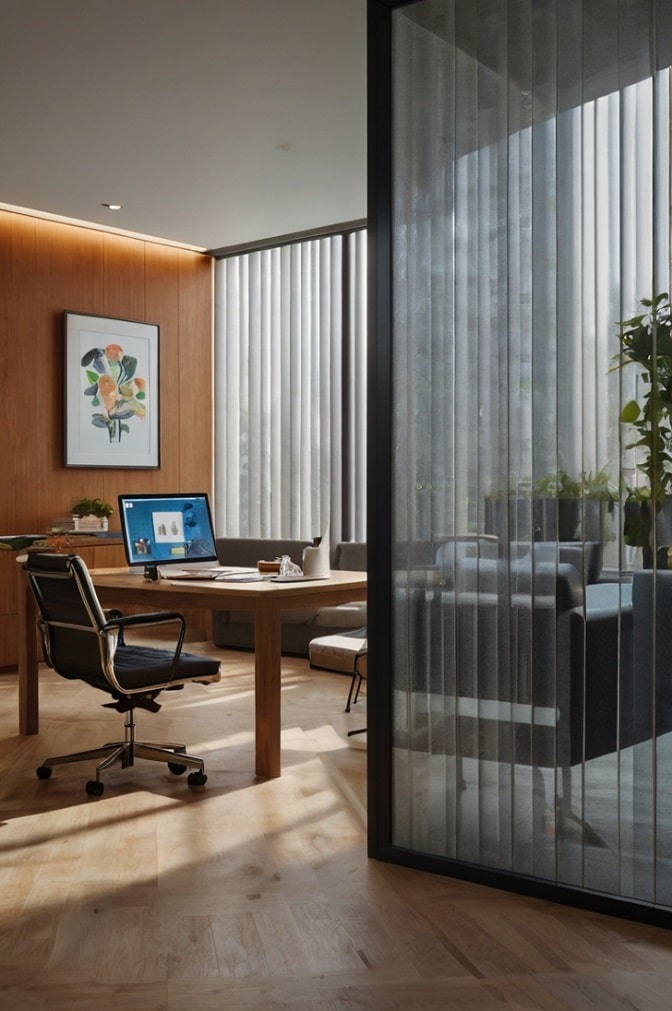
Open-concept homes present privacy challenges for video calls and focused work. The solution: adaptive privacy screens that deploy only when needed and disappear when not in use.
These range from motorized dividers to smart glass that transitions from transparent to opaque with a tap. Many double as projection surfaces for presentations or ambient displays when not serving as privacy barriers. Proper clever, these are.
19. The Digital Command Center
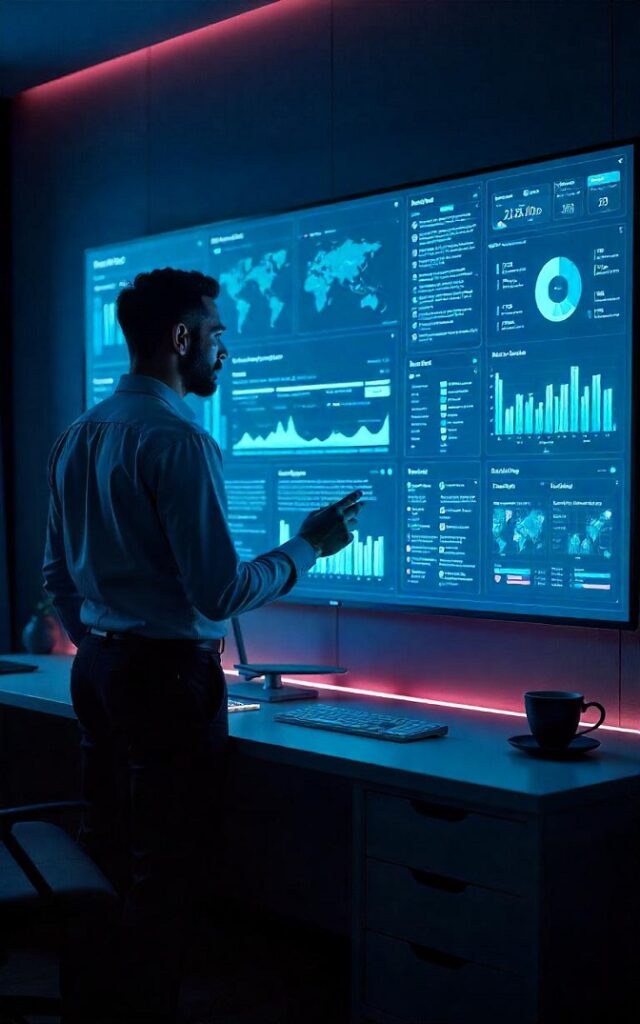
Information management requires centralization. The digital command center—typically a wall-mounted display with customizable widgets—provides a unified interface for your digital work life.
This hub connects calendar events, communication channels, project timelines, and even home systems like security and climate control. The goal is reducing context-switching between different apps and devices that fragments attention and productivity.
20. Atmospheric Sound Zoning
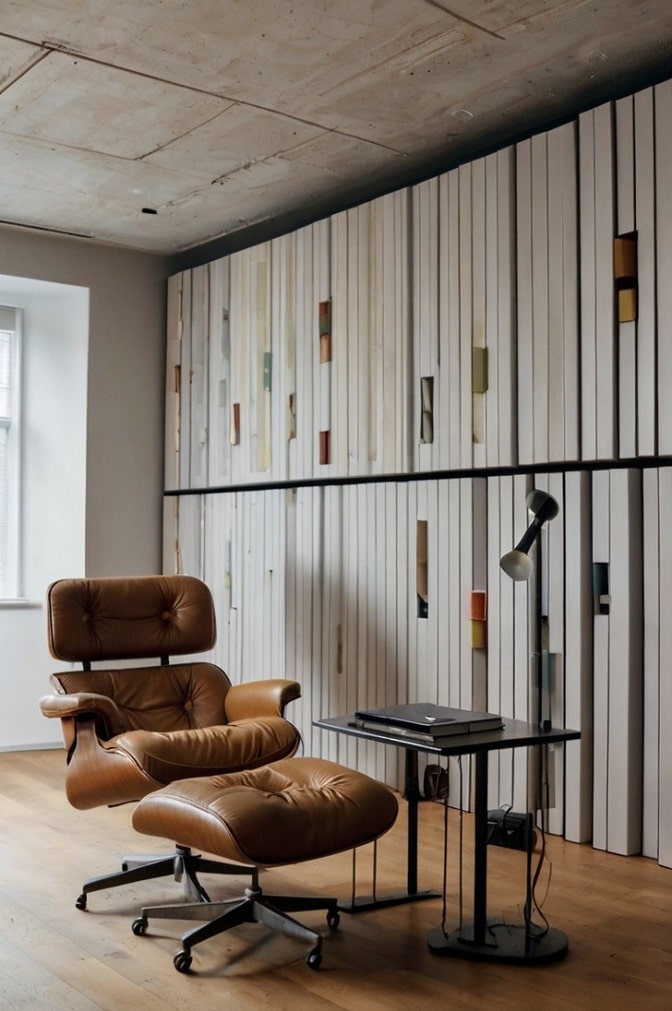
Background sound profoundly impacts concentration. Modern offices incorporate programmable sound zones that can shift from productive white noise to nature sounds to complete silence based on the task at hand.
Directional speakers ensure these sound environments don’t bleed into other house areas, while noise-cancelling technology creates bubbles of acoustic privacy without physical barriers. Your family can be watching TV while you’re in a meeting without either group hearing the other.
21. The Inspiration Gallery
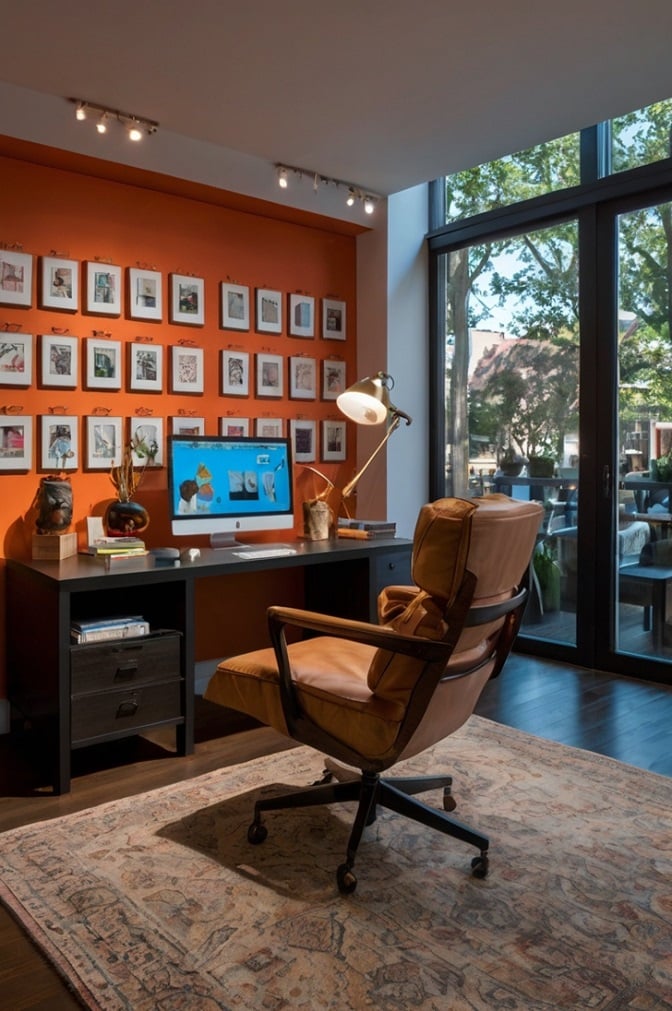
Creative thinking needs fuel. An inspiration gallery—a dedicated space for rotating visual stimuli—provides fresh perspectives and unexpected connections that spark innovation.
This might be a simple pin board, a digital display showing rotating artwork, or a shelf of objects that intrigue and provoke thought. The key is regular rotation to prevent mental adaptation and continued creative stimulation.
22. Ergonomic Movement Paths
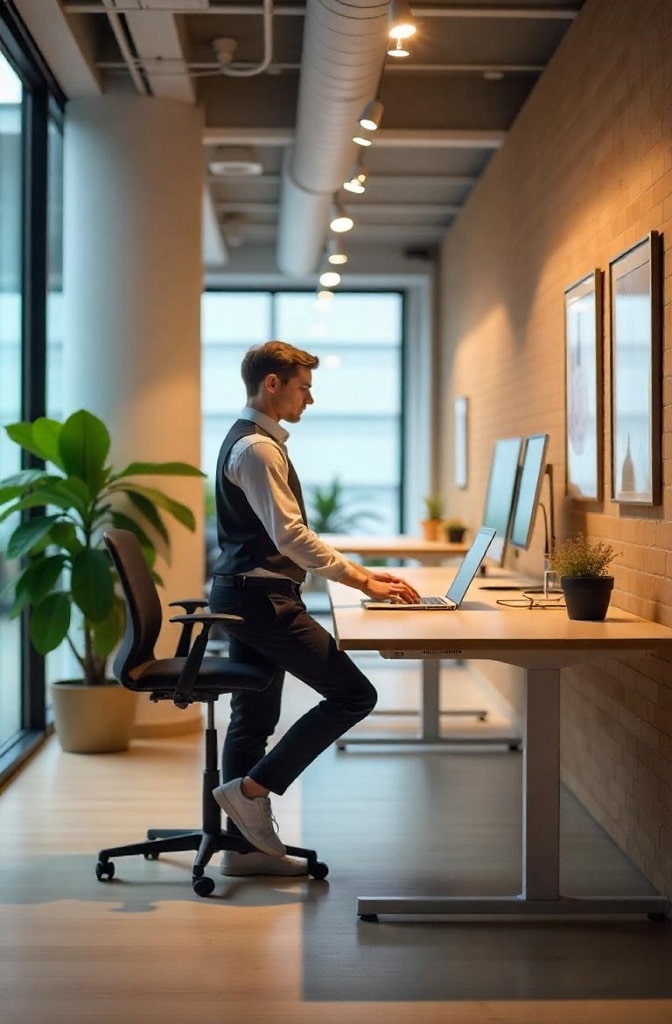
Static positions kill creativity and health. Modern offices design natural movement paths that encourage physical motion throughout the day without disrupting workflow.
Standing desks were just the beginning. Now think raised platforms for different work modes, deliberate distance between frequently used items, and spaces that naturally invite stretching or position changes. Your best ideas often come when your body is in motion.
23. Seasonal Adaptation Systems
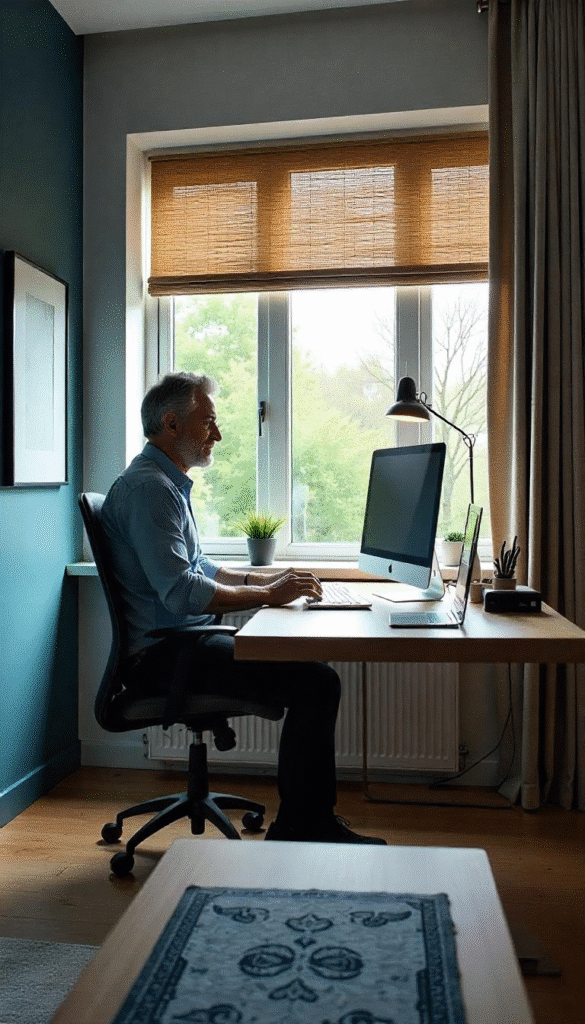
Our work needs change with seasons, both literal and project-based. The adaptive office includes storage and organization systems that can easily transform based on current requirements.
Winter might call for additional lighting and more enclosed, cozy work spaces, while summer might leverage natural light and more open configurations. Similarly, different project phases might require different organizational approaches—which your space should accommodate.
24. The Legacy Corner

Not everything needs to be cutting-edge. The legacy corner preserves elements of traditional work that remain irreplaceable—perhaps a beautiful fountain pen collection, reference books that inspire, or analog tools that still outperform their digital counterparts.
This area honors the history of your profession while remaining functional. It reminds us that innovation builds on tradition rather than simply replacing it. Sometimes the old ways work best, after all.
Creating Your Personalized System
The ultimate home office isn’t about blindly following trends—it’s about creating a system tailored to your specific work patterns, industry needs, and personal preferences. The best organization system is one you’ll actually maintain.
Start by analyzing your typical workday. Which tasks consume most of your time? Where do bottlenecks occur? What items do you reach for constantly? Let these observations guide your organizational priorities rather than aesthetics alone.
Remember that flexibility remains paramount. The nature of work continues to evolve rapidly, and your organization system should adapt accordingly. Build in review periods to assess what’s working and what isn’t, then refine without hesitation.
The truly organized home office of 2025 isn’t the one that looks most impressive in video backgrounds—it’s the one that feels effortless to use, maintains itself with minimal intervention, and supports your particular brand of productivity without calling attention to itself.
With these 24 ideas as your starting point, you can create a workspace that doesn’t just survive the challenges of modern work—it helps you thrive within them.

Mariana is the founder and voice behind Home Nookery, a curated blog dedicated to home design, décor inspiration, and cozy living. With a passion for creating beautiful, functional spaces, Mariana shares practical tips, styling ideas, and thoughtful insights to help readers turn their houses into homes. Whether you’re redesigning a room or just adding a touch of charm, she’s here to guide you with creativity and heart.
